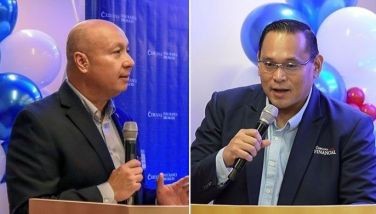Batting for IT knowledge
March 25, 2002 | 12:00am
The rejuvenated STI Education Services Group has slowly been reworking its strategy for providing information technology (IT) education for all. The mass-based approach has benefited so many aspiring technology workers but needs new direction in this era of globalization where knowledge is power.
STI is now targeting new markets for its online IT education format through e-Colleges and for its partnership with Carnegie Technology Education through the iAcademy. It is also aggressively pursuing expansion plans for the STI Prep School; an IT education and resource center called sti.net; and an IT literacy program for professionals called the World Web Centre.
To support this shift, STI appointed its first chief information officer, Peter Fernandez, in April 2001. Fernandez, who brings with him 12 years of teaching experience, was a former professor and director of the Graduate School of Computer Science at De La Salle University and was an associate professor and CIO at the Asian Institute of Management.
Fernandez has found a new challenge in STI. His goals are to "information-enable" every knowledge worker in the STI group through STI’s own known management (KM) initiative. As part of this initiative, he has built the technological infrastructure for STI in his first year and has started to standardize and deploy major operational systems in the organization. Succeeding phases of his initiative are to flow these operational systems to the entire school network and its subsidiaries.
"Some say KM is just a buzzword. But for us, it makes sense," said Fernandez. "We have over 100 schools spread all around the country. Each operates on an identical operating system with the same network environment. How do you share the best practices among schools spread across different geographical areas? If you find a great administrator and send him to train his counterparts in the other regions, that will not only be too expensive, it will also take too much time."
The KM project, including last year’s infrastructure build-up, is estimated to cost at least P50 million.
Talking of expenditures, Fernandez warns against immediately adopting new technologies. "My personal approach toward technology is from a cynical point of view. I always ask, ‘What value can this particular piece of technology give to my organization?’ If I can’t answer that, then it’s useless to me. However, even if I am slow in adopting new technology, once I have decided there is value to be gained, my learning curve tends to be very steep."
He advises those aspiring to be CIO to be open-minded, to be willing to try new things and to be champions of change. "The CIO could have an engineering background with some business training. Or the reverse, a business background with technical training," he said. In other words, the CIO has to have the right mix of technical knowledge and a healthy appreciation of how business works.
STI is now targeting new markets for its online IT education format through e-Colleges and for its partnership with Carnegie Technology Education through the iAcademy. It is also aggressively pursuing expansion plans for the STI Prep School; an IT education and resource center called sti.net; and an IT literacy program for professionals called the World Web Centre.
To support this shift, STI appointed its first chief information officer, Peter Fernandez, in April 2001. Fernandez, who brings with him 12 years of teaching experience, was a former professor and director of the Graduate School of Computer Science at De La Salle University and was an associate professor and CIO at the Asian Institute of Management.
Fernandez has found a new challenge in STI. His goals are to "information-enable" every knowledge worker in the STI group through STI’s own known management (KM) initiative. As part of this initiative, he has built the technological infrastructure for STI in his first year and has started to standardize and deploy major operational systems in the organization. Succeeding phases of his initiative are to flow these operational systems to the entire school network and its subsidiaries.
"Some say KM is just a buzzword. But for us, it makes sense," said Fernandez. "We have over 100 schools spread all around the country. Each operates on an identical operating system with the same network environment. How do you share the best practices among schools spread across different geographical areas? If you find a great administrator and send him to train his counterparts in the other regions, that will not only be too expensive, it will also take too much time."
Talking of expenditures, Fernandez warns against immediately adopting new technologies. "My personal approach toward technology is from a cynical point of view. I always ask, ‘What value can this particular piece of technology give to my organization?’ If I can’t answer that, then it’s useless to me. However, even if I am slow in adopting new technology, once I have decided there is value to be gained, my learning curve tends to be very steep."
He advises those aspiring to be CIO to be open-minded, to be willing to try new things and to be champions of change. "The CIO could have an engineering background with some business training. Or the reverse, a business background with technical training," he said. In other words, the CIO has to have the right mix of technical knowledge and a healthy appreciation of how business works.
BrandSpace Articles
<
>
- Latest
Latest
Latest
November 29, 2024 - 9:30am
November 29, 2024 - 9:30am
November 28, 2024 - 8:00am
November 28, 2024 - 8:00am
November 25, 2024 - 1:00pm
November 25, 2024 - 1:00pm
November 19, 2024 - 12:00am
November 19, 2024 - 12:00am
November 18, 2024 - 9:32am
November 18, 2024 - 9:32am
Recommended






























